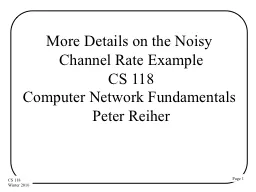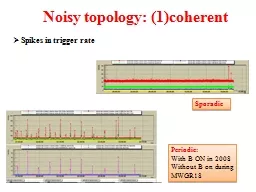PPT-More Details on the Noisy Channel Rate Example
Author : conchita-marotz | Published Date : 2017-11-13
CS 118 Computer Network Fundamentals Peter Reiher Split things Send a 0 Send a 1 Receive a 0 Receive a 1 5 0 1 5 More complex noise What is the capacity
Presentation Embed Code
Download Presentation
Download Presentation The PPT/PDF document "More Details on the Noisy Channel Rate E..." is the property of its rightful owner. Permission is granted to download and print the materials on this website for personal, non-commercial use only, and to display it on your personal computer provided you do not modify the materials and that you retain all copyright notices contained in the materials. By downloading content from our website, you accept the terms of this agreement.
More Details on the Noisy Channel Rate Example: Transcript
Download Rules Of Document
"More Details on the Noisy Channel Rate Example"The content belongs to its owner. You may download and print it for personal use, without modification, and keep all copyright notices. By downloading, you agree to these terms.
Related Documents














